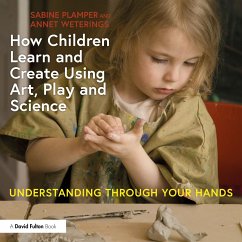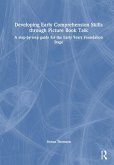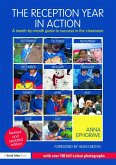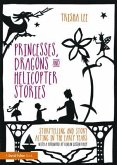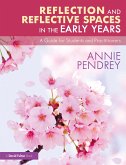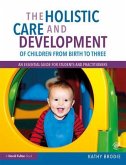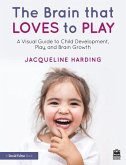Sabine Plamper, Annet Weterings
How Children Learn and Create Using Art, Play and Science
Understanding Through Your Hands
Sabine Plamper, Annet Weterings
How Children Learn and Create Using Art, Play and Science
Understanding Through Your Hands
- Broschiertes Buch
- Merkliste
- Auf die Merkliste
- Bewerten Bewerten
- Teilen
- Produkt teilen
- Produkterinnerung
- Produkterinnerung
This book shows that creativity is so much more than drawing or painting something beautiful. It is a way of understanding the world through your hands and learning through art, play and science.
Andere Kunden interessierten sich auch für
![Developing Early Comprehension Skills Through Picture Book Talk Developing Early Comprehension Skills Through Picture Book Talk]() Donna ThomsonDeveloping Early Comprehension Skills Through Picture Book Talk55,99 €
Donna ThomsonDeveloping Early Comprehension Skills Through Picture Book Talk55,99 €![The Reception Year in Action, revised and updated edition The Reception Year in Action, revised and updated edition]() Anna Ephgrave (Assistant Head Teacher, Carterhatch Infant School, UThe Reception Year in Action, revised and updated edition48,99 €
Anna Ephgrave (Assistant Head Teacher, Carterhatch Infant School, UThe Reception Year in Action, revised and updated edition48,99 €![Princesses, Dragons and Helicopter Stories Princesses, Dragons and Helicopter Stories]() Trisha LeePrincesses, Dragons and Helicopter Stories25,99 €
Trisha LeePrincesses, Dragons and Helicopter Stories25,99 €![Reflection and Reflective Spaces in the Early Years Reflection and Reflective Spaces in the Early Years]() Annie PendreyReflection and Reflective Spaces in the Early Years25,99 €
Annie PendreyReflection and Reflective Spaces in the Early Years25,99 €![The Holistic Care and Development of Children from Birth to Three The Holistic Care and Development of Children from Birth to Three]() Kathy Brodie (UK Early Years Consultant)The Holistic Care and Development of Children from Birth to Three44,99 €
Kathy Brodie (UK Early Years Consultant)The Holistic Care and Development of Children from Birth to Three44,99 €![Wellbeing Explained Wellbeing Explained]() Sonia Mainstone-CottonWellbeing Explained21,99 €
Sonia Mainstone-CottonWellbeing Explained21,99 €![The Brain that Loves to Play The Brain that Loves to Play]() Jacqueline HardingThe Brain that Loves to Play42,99 €
Jacqueline HardingThe Brain that Loves to Play42,99 €-
-
-
This book shows that creativity is so much more than drawing or painting something beautiful. It is a way of understanding the world through your hands and learning through art, play and science.
Produktdetails
- Produktdetails
- Verlag: Taylor & Francis Ltd
- Seitenzahl: 168
- Erscheinungstermin: 22. November 2023
- Englisch
- Abmessung: 207mm x 207mm x 10mm
- Gewicht: 462g
- ISBN-13: 9781032523811
- ISBN-10: 1032523816
- Artikelnr.: 68716068
- Herstellerkennzeichnung
- Libri GmbH
- Europaallee 1
- 36244 Bad Hersfeld
- gpsr@libri.de
- Verlag: Taylor & Francis Ltd
- Seitenzahl: 168
- Erscheinungstermin: 22. November 2023
- Englisch
- Abmessung: 207mm x 207mm x 10mm
- Gewicht: 462g
- ISBN-13: 9781032523811
- ISBN-10: 1032523816
- Artikelnr.: 68716068
- Herstellerkennzeichnung
- Libri GmbH
- Europaallee 1
- 36244 Bad Hersfeld
- gpsr@libri.de
Sabine Plamper is a cultural pedagogue and photographer with many years of experience working with young children in studios. She was also the artist educator at a Reggio Emilia-inspired children's centre in Amsterdam. Since 2011, Sabine has been working with 18-month to 10-year-old children at her Kris Kras Studio and gives practical trainings for educators in the Netherlands and abroad. Annet Weterings is an author of books and articles for childcare and primary school education. Her works include a Dutch book on experiencing nature: Hear and see, smell, feel, taste. She has also adapted four books by the British author Penny Tassoni on the theme of parenting and has written a guide on promoting reading for teachers and teaching assistants.
Preface
Introduction
1 Investigating is experiencing, learning - it's creativity
1.1 The importance of making your own marks
1.2 Materials research in order to understand the world
1.3 Making marks and learning through discovery
1.4 A process of shaping is a process of developing awareness
2 Visions on guiding creative processes
2.1 Educational and creative sources of inspiration
2.1.1 Jesper Juul
2.1.2 Arno Stern
2.1.3 Reggio Emilia and working structurally through research
2.2 The practice-oriented vision of Understanding Through your Hands
3 Guiding creative processes
3.1 Introduction
3.2 Basic attitude, responsibilities and tasks of adults
3.2.1 Creating an inspiring atmosphere
3.2.2 Choice of material
3.2.3 Individual guidance and getting children into the flow
3.2.4 Appreciating instead of judging, focus on process rather than product
3.2.5 Being witness to the creative process
3.3 What the experts say
3.3.1 Titia Sprey, studio educator, Kris Kras Studio, Amsterdam
3.3.2 Heidi de Geus, studio educator, BouwWerk lessons, De Bron Primary
School, Amsterdam
3.3.3 Sanne Groen, artist at children's centres and schools in the
Netherlands
3.3.4 Mirja van der Bijl, studio educator, Laterna Magica Children's
Centre, Amsterdam
3.3.5 Ank Bredewold, art teacher, Het Gein Primary School, Amsterdam
3.4 Finding you own style of working with Understanding Through your Hands
Literature
Introduction
1 Investigating is experiencing, learning - it's creativity
1.1 The importance of making your own marks
1.2 Materials research in order to understand the world
1.3 Making marks and learning through discovery
1.4 A process of shaping is a process of developing awareness
2 Visions on guiding creative processes
2.1 Educational and creative sources of inspiration
2.1.1 Jesper Juul
2.1.2 Arno Stern
2.1.3 Reggio Emilia and working structurally through research
2.2 The practice-oriented vision of Understanding Through your Hands
3 Guiding creative processes
3.1 Introduction
3.2 Basic attitude, responsibilities and tasks of adults
3.2.1 Creating an inspiring atmosphere
3.2.2 Choice of material
3.2.3 Individual guidance and getting children into the flow
3.2.4 Appreciating instead of judging, focus on process rather than product
3.2.5 Being witness to the creative process
3.3 What the experts say
3.3.1 Titia Sprey, studio educator, Kris Kras Studio, Amsterdam
3.3.2 Heidi de Geus, studio educator, BouwWerk lessons, De Bron Primary
School, Amsterdam
3.3.3 Sanne Groen, artist at children's centres and schools in the
Netherlands
3.3.4 Mirja van der Bijl, studio educator, Laterna Magica Children's
Centre, Amsterdam
3.3.5 Ank Bredewold, art teacher, Het Gein Primary School, Amsterdam
3.4 Finding you own style of working with Understanding Through your Hands
Literature
Preface
Introduction
1 Investigating is experiencing, learning - it's creativity
1.1 The importance of making your own marks
1.2 Materials research in order to understand the world
1.3 Making marks and learning through discovery
1.4 A process of shaping is a process of developing awareness
2 Visions on guiding creative processes
2.1 Educational and creative sources of inspiration
2.1.1 Jesper Juul
2.1.2 Arno Stern
2.1.3 Reggio Emilia and working structurally through research
2.2 The practice-oriented vision of Understanding Through your Hands
3 Guiding creative processes
3.1 Introduction
3.2 Basic attitude, responsibilities and tasks of adults
3.2.1 Creating an inspiring atmosphere
3.2.2 Choice of material
3.2.3 Individual guidance and getting children into the flow
3.2.4 Appreciating instead of judging, focus on process rather than product
3.2.5 Being witness to the creative process
3.3 What the experts say
3.3.1 Titia Sprey, studio educator, Kris Kras Studio, Amsterdam
3.3.2 Heidi de Geus, studio educator, BouwWerk lessons, De Bron Primary
School, Amsterdam
3.3.3 Sanne Groen, artist at children's centres and schools in the
Netherlands
3.3.4 Mirja van der Bijl, studio educator, Laterna Magica Children's
Centre, Amsterdam
3.3.5 Ank Bredewold, art teacher, Het Gein Primary School, Amsterdam
3.4 Finding you own style of working with Understanding Through your Hands
Literature
Introduction
1 Investigating is experiencing, learning - it's creativity
1.1 The importance of making your own marks
1.2 Materials research in order to understand the world
1.3 Making marks and learning through discovery
1.4 A process of shaping is a process of developing awareness
2 Visions on guiding creative processes
2.1 Educational and creative sources of inspiration
2.1.1 Jesper Juul
2.1.2 Arno Stern
2.1.3 Reggio Emilia and working structurally through research
2.2 The practice-oriented vision of Understanding Through your Hands
3 Guiding creative processes
3.1 Introduction
3.2 Basic attitude, responsibilities and tasks of adults
3.2.1 Creating an inspiring atmosphere
3.2.2 Choice of material
3.2.3 Individual guidance and getting children into the flow
3.2.4 Appreciating instead of judging, focus on process rather than product
3.2.5 Being witness to the creative process
3.3 What the experts say
3.3.1 Titia Sprey, studio educator, Kris Kras Studio, Amsterdam
3.3.2 Heidi de Geus, studio educator, BouwWerk lessons, De Bron Primary
School, Amsterdam
3.3.3 Sanne Groen, artist at children's centres and schools in the
Netherlands
3.3.4 Mirja van der Bijl, studio educator, Laterna Magica Children's
Centre, Amsterdam
3.3.5 Ank Bredewold, art teacher, Het Gein Primary School, Amsterdam
3.4 Finding you own style of working with Understanding Through your Hands
Literature

